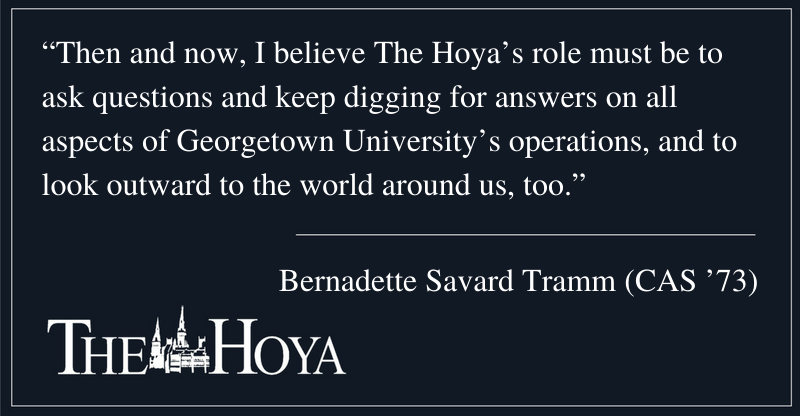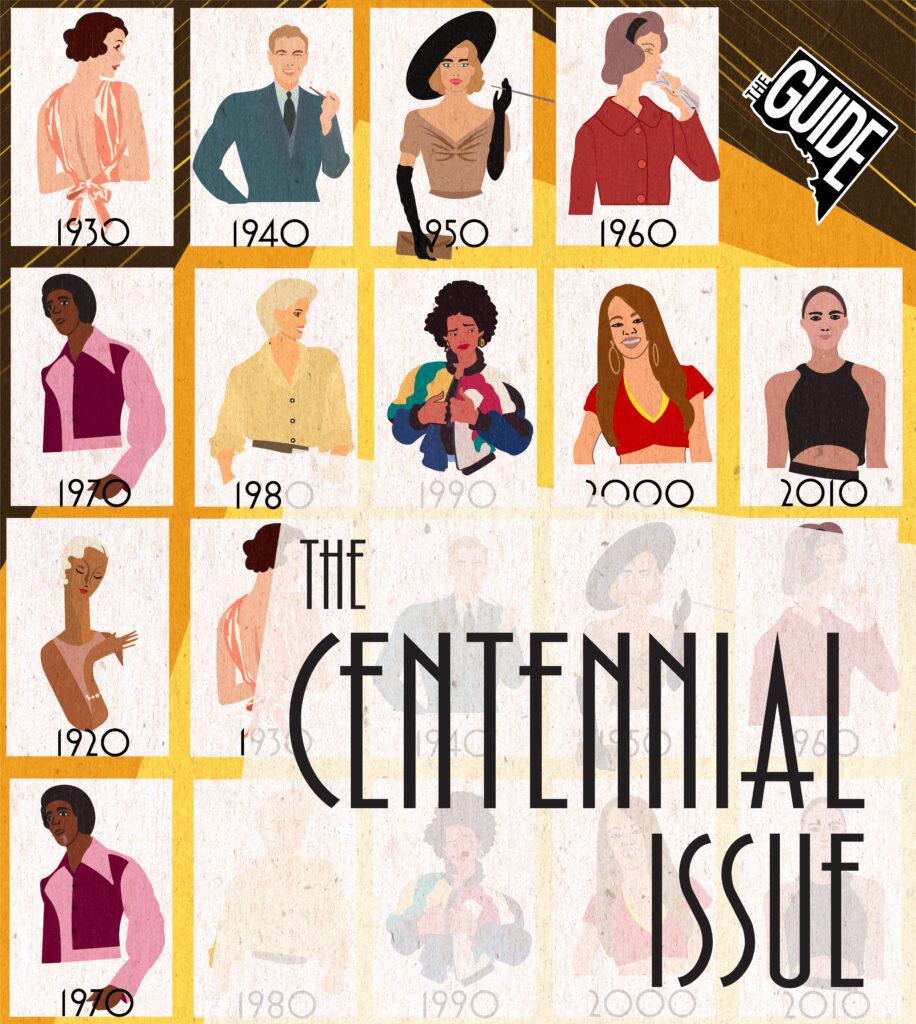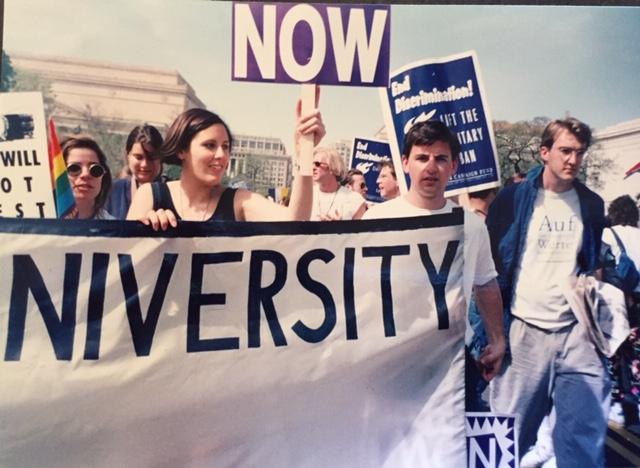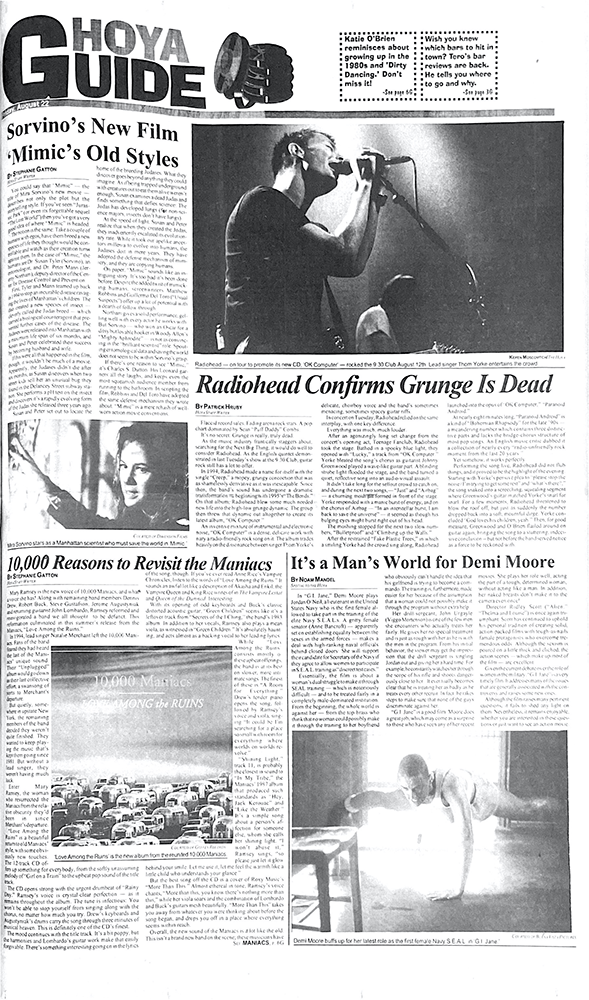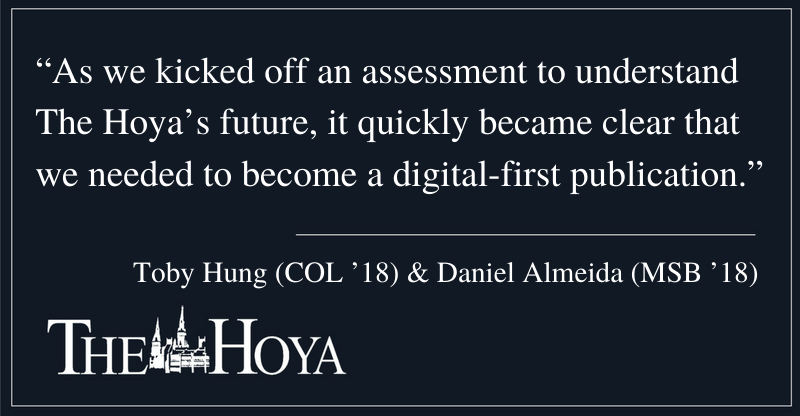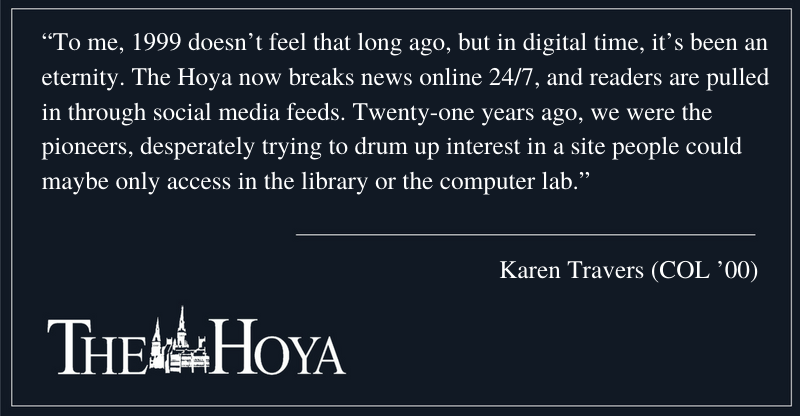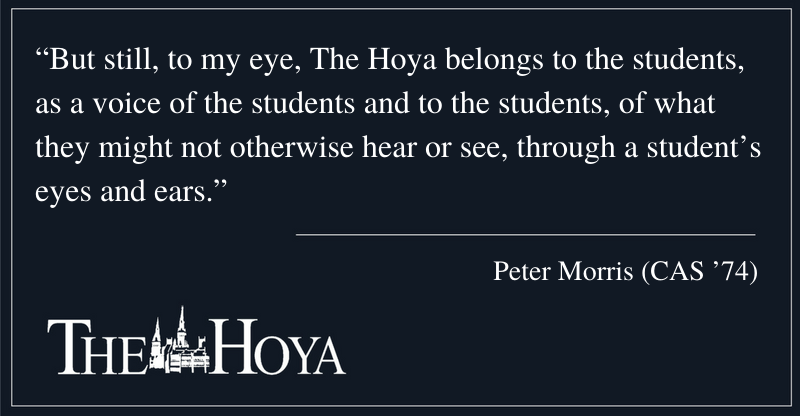As astronaut Neil Armstrong’s first steps on the moon in July 1969 forever expanded humanity’s horizons, women setting foot on the Hilltop just a few weeks later transformed Georgetown University for all time. Although women were already enrolled in the School of Nursing, the School of Languages and Linguistics, and the School of Foreign Service, the arrival of the first four-year class of College of Arts and Sciences women marked Georgetown’s “giant leap” to a fully coed environment.
As each new class brought more women, The Hoya chronicled the small and great impacts of a coed campus life. “Parietal,” for example, is a word anyone younger than 60 has likely never heard, as it describes the rules that governed when male and female students could visit each other’s dorms. As archaic as it now seems, disputes over the regulations grabbed headlines in The Hoya for the better part of four years.
Beyond dorms and classrooms, the newly coed student body needed more places to study and hang out. The Hoya reported that the opening of Lauinger Library in April 1970 was an immediate hit with its many different study areas and extended hours. The creation of a small student center in the Healy Hall basement in late 1970 was also welcomed.
The Hoya was undergoing its own revolution, too, as women entered the old newsroom in the basement of Copley Hall, eventually leading to my election as the first female editor-in-chief in spring 1972. I was quoted as saying I wanted The Hoya to be the “watchdog of the administration.” Then and now, I believe The Hoya’s role must be to ask questions and keep digging for answers on all aspects of the university’s operations, and to look outward to the world around us, too.
Back then, the rising enrollment resulted in more than half of all undergraduates living off campus by 1972. The Hoya covered the push for more student housing to retain Georgetown’s distinctive residential college experience, as we reported on the purchase of Alban Towers as a stopgap and on plans for new dorms to fill the gap. We also covered the “lemon-stration” in February 1973 as students deposited lemons outside the president’s office to protest a “sour deal” of rising tuition, room and board.
Beyond campus, The Hoya engaged with the striking changes sweeping the nation. When the voting age was lowered to 18 by the 26th Amendment in 1971, The Hoya stepped up its responsibilities to inform and help empower newly enfranchised students. For example, The Hoya’s spotlighting of numerous Gaston Hall speakers, like former Secretary of State John Kerry, then representing Vietnam Veterans Against the War, helped fuel the urgency students were feeling to engage with the world outside the gates at 37th and O.
In fact, our very location offered Hoya writers and photographers an unparalleled opportunity to chronicle the massive student demonstrations in Washington, D.C., as “Peace Now!” chants reverberated during those years of confrontation and protest. The Kent State student shootings led to a national student strike in May 1970 that actually shut down Georgetown before final exams. May Day demonstrations the following year also brought students flooding to the capital and our campus. As student journalists, we were challenged to add our unique perspective to these national stories and highlight how Georgetown students were involved in ultimately changing the course of the Vietnam War.
The Hoya also explored how other nationwide movements were affecting our campus. For example, we reported on the activities of the newly formed Black Student Alliance, as this small but active group of black students pushed for recognition of their needs and the creation of the first Black Student House.
The College Board recently asked what students need to know to succeed in college and in life. The answer: the two codes of computer science and the U.S. Constitution, particularly the First Amendment’s five freedoms. For me, the freedom of the press has never been more important.
I couldn’t be prouder to be one of the women who stepped onto the Hilltop back in 1969 and to be part of The Hoya’s past. I look forward to its next 100 years of enlightening and empowering student journalism.
Bernadette Savard Tramm (CAS ’73) is a former editor-in-chief of The Hoya.


